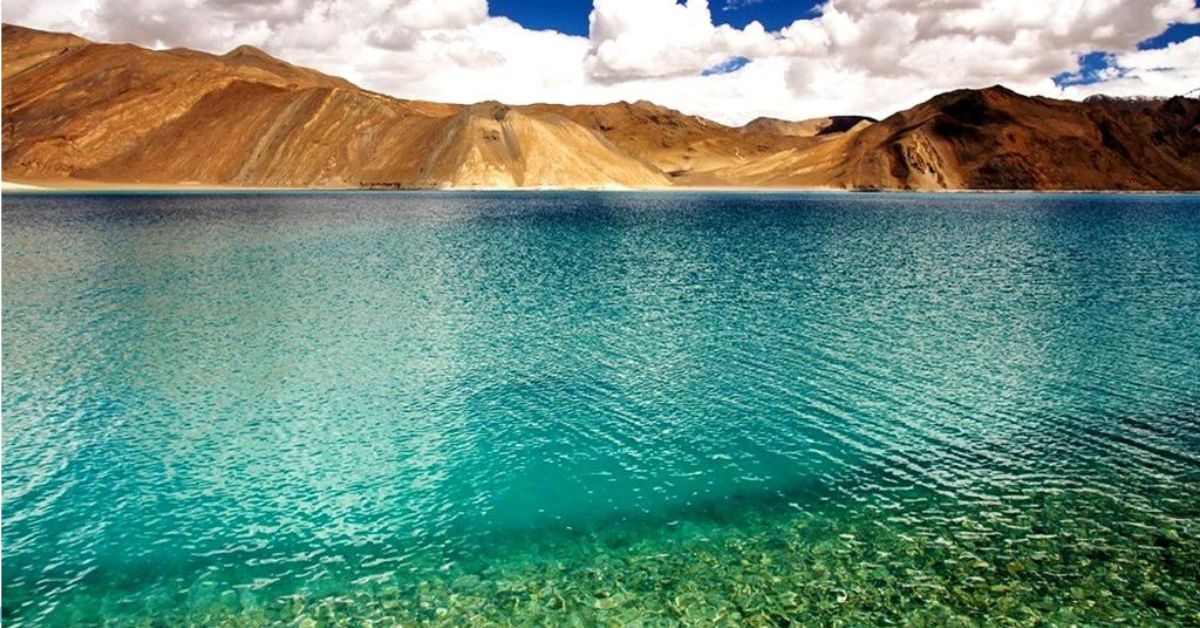Pangong Lake is a magical place tucked high in the Himalayas. This huge, blue lake stretches for miles between India and China. Its waters shimmer in different colors all day long, and the mountains around it are breathtaking. People from all over the world come to see this amazing lake. Movies have even been filmed here! But Pangong Lake is more than just a pretty picture. It’s a peaceful place where you can relax and enjoy nature.
This guide will help you plan your trip to Pangong Lake. We’ll tell you the best time to go, how to get there, and what to do when you arrive. Whether you love adventure or just want to escape from everyday life, Pangong Lake is the perfect place to visit.
How to reach:
By Air
The closest airport to Pangong Lake is Kushok Bakula Rimpochee Airport in Leh, Ladakh. You can fly there from major Indian cities like Delhi, Mumbai, and Srinagar. Once in Leh, you have a few options:
- Taxi or Private Car: Hire a taxi or rent a car for a comfortable journey. The drive to Pangong Lake is about 5-6 hours.
- Shared Taxi: Opt for a shared taxi if you’re on a budget. It’s a more economical choice.
By Road
There are two main routes to reach Pangong Lake by road:
- Leh to Pangong Lake via Chang La Pass: This is the most popular route, offering stunning views of the Chang La Pass. The journey takes about 5-6 hours.
- Nubra Valley to Pangong Lake via Shyok Village: This less-traveled route takes you through the remote Shyok Village, offering a unique experience.
By Motorcycle
For adventure enthusiasts, riding a motorcycle to Pangong Lake is an unforgettable experience. However, ensure your bike is in good condition and you’re prepared for the challenging road conditions.
Best time to visit:
Summer (May to September)
- Pleasant weather: Enjoy comfortable temperatures ranging from 5°C to 25°C.
- Accessibility: All routes, including the iconic Chang La Pass, are open.
- Vibrant lake: Experience the lake’s famous vivid blue color and lush surroundings.
- Ideal conditions: Perfect for camping and stargazing.
Autumn (October to November)
- Clear skies: Capture stunning photos with clear weather conditions.
- Fewer crowds: Enjoy a more peaceful experience with less tourist traffic.
- Cooling temperatures: Prepare for colder evenings and mornings.
- Road closures: Be aware of potential road closures due to early snowfall.
Winter (December to February)
- Frozen lake: Witness the lake’s unique frozen state, ideal for photography.
- Adventure: Perfect for those seeking a challenging winter adventure.
- Extreme cold: Be prepared for very low temperatures, often below -20°C.
- Limited access: Many roads and services are closed during this period.
Spring (March to April)
- Awakening nature: Experience the beginning of spring with blooming flowers.
- Warming temperatures: Enjoy milder weather conditions compared to winter.
- Unpredictable weather: Be prepared for potential snowfall at higher altitudes.
- Fewer crowds: Enjoy a quieter visit before the peak tourist season.
Attractions:
Maan Village:
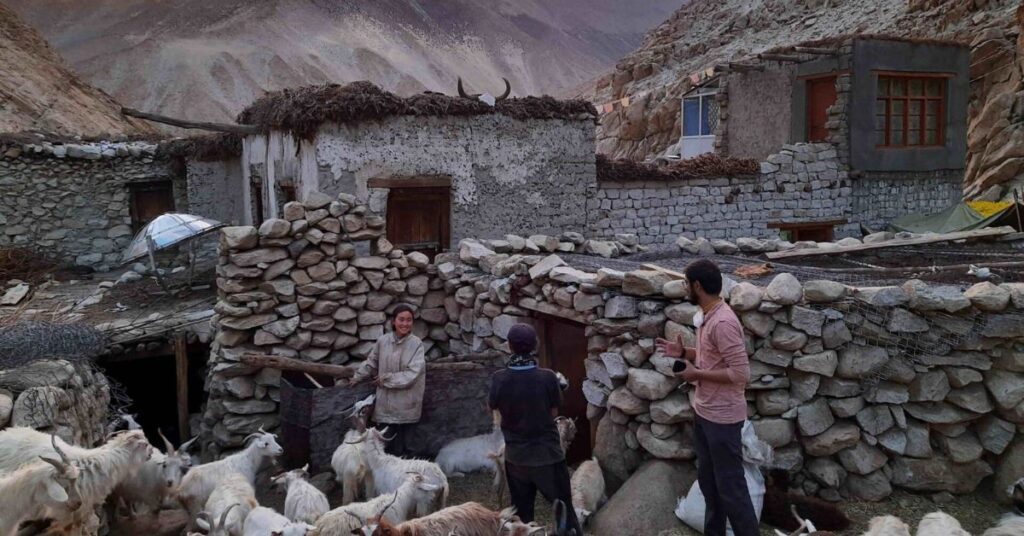
Maan Village is a hidden gem near Pangong Lake. This little village is famous for its friendly people and traditional Ladakhi way of life. The houses here are really cool, with flat roofs and beautiful wooden designs. You can meet the locals and learn about their customs. Trying the local food is a must! It’s made with fresh ingredients from the area. Being so close to Pangong Lake makes Maan Village the perfect place to relax and experience the real Ladakh.
Spangmik Village:
Spangmik is a little village right by Pangong Lake. It’s a peaceful place with amazing views of the lake and the mountains around it. You can stay in cozy Ladakhi-style homes and enjoy the quiet atmosphere. It’s a great spot to escape the crowds and relax. You can also go on walks or hikes nearby and maybe even see some wild animals. Spangmik is the perfect place to unwind and enjoy the beauty of Ladakh.
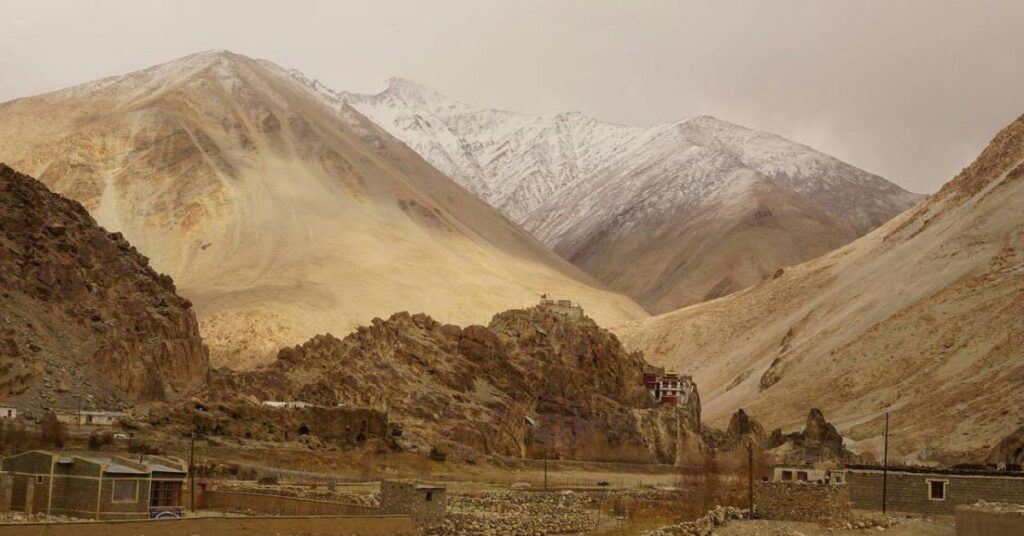
Tso Moriri Lake:
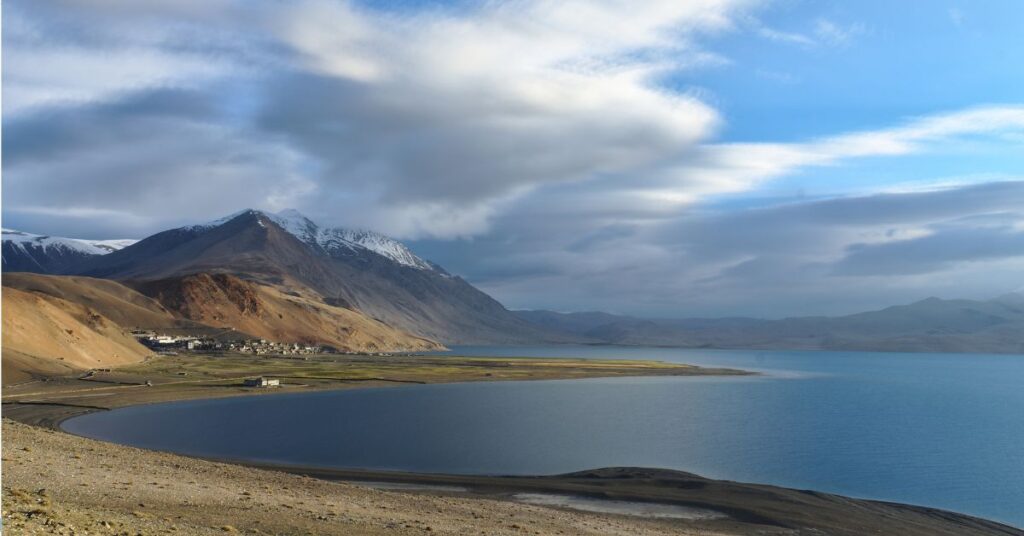
Tso Moriri is another amazing lake in Ladakh. It’s even higher than Pangong Lake and feels like a secret hideaway. The water is a beautiful blue color and the mountains around it are covered in snow. You might even see some rare animals like the Tibetan wild ass. It’s a peaceful place to relax and enjoy the beauty of nature.
Chushul Village:
Chushul is a really remote village in Ladakh. Life is tough there, but the people are strong and have lived there for a long time. The houses look different from other places, and the people have their own special ways of doing things. It’s like stepping back in time. The area around Chushul is wild and beautiful, and it’s a great place to see how people live in such a harsh environment.
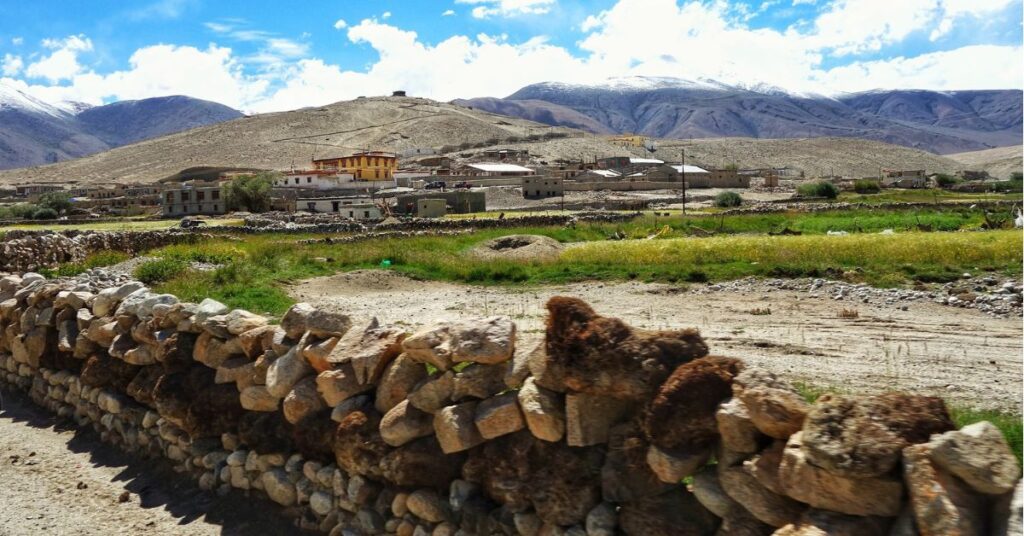
Korzok Village:
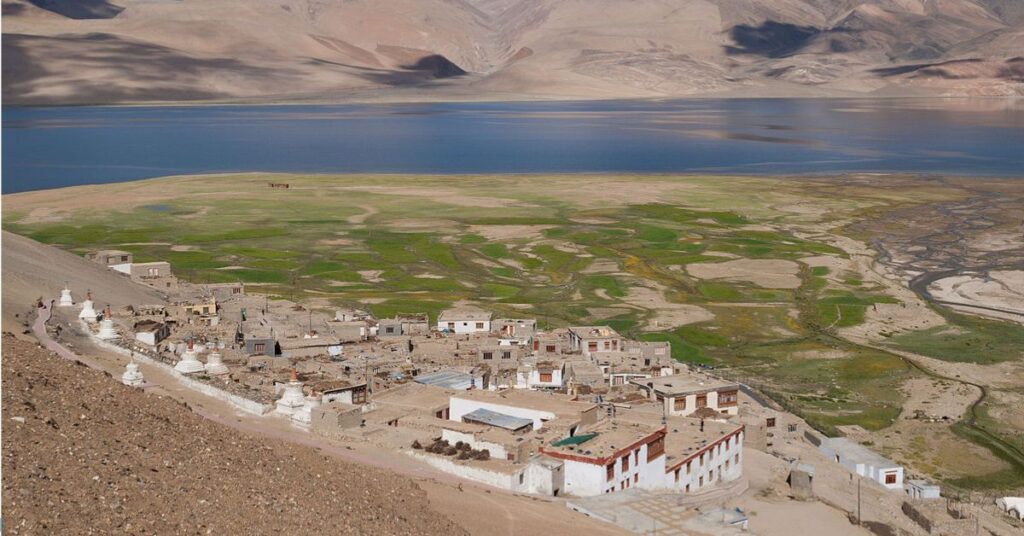
Korzok is a peaceful village with stunning views of Tso Moriri Lake and the mountains. It’s a great place to relax and experience traditional Ladakhi life. There’s even a beautiful old monastery to visit. It’s perfect for people who want to escape the crowds and enjoy nature.
Local Experiences:
- Savor Ladakhi flavors: Enjoy delicious local dishes like momos, thukpa, and tsampa at small eateries in villages like Spangmik and Maan.
- Meet the locals: Interact with friendly Ladakhi people to learn about their customs and daily life.
- Explore local markets: Discover unique handicrafts, taste local snacks, and soak in the vibrant atmosphere.
- Witness traditions: Experience the rich cultural heritage through traditional Ladakhi dance and music performances.
- Stargaze in awe: Marvel at the breathtaking night sky filled with countless stars.
- Discover wildlife: Embark on a wildlife safari to spot unique animals like the Tibetan antelope or migratory birds.
- Hike through nature: Enjoy scenic treks offering panoramic views of the lake and surrounding mountains.
- Camp by the lake: Experience the tranquility of Pangong Lake firsthand by camping on its shores.
- Visit monasteries: Immerse yourself in Buddhist culture by exploring local monasteries and attending prayer ceremonies.
- Attend festivals: Participate in vibrant Buddhist festivals like Hemis, featuring captivating mask dances.
- Shop for souvenirs: Bring home unique Ladakhi handicrafts like woolen goods, jewelry, and textiles.
- Enjoy village life: Take leisurely walks through traditional villages to experience the local lifestyle.
Travel tips:
- Acclimatize: Spend a few days in Leh to adjust to the high altitude before heading to Pangong Lake.
- Dress warmly: Pack layers of clothing, including thermal wear, to protect yourself from the cold.
- Stay hydrated: Drink plenty of water to combat dehydration caused by the high altitude and dry climate.
- Be prepared for altitude sickness: Carry altitude sickness medication and know its symptoms.
- Know emergency contacts: Have a list of local hospitals and emergency numbers.
- Check road conditions: Verify road status before your journey to avoid unexpected delays.
- Obtain necessary permits: Acquire the required permits for visiting Pangong Lake.
- Pack essentials: Carry water, snacks, and basic medications for your trip.
- Travel with a reliable vehicle: Opt for a well-maintained vehicle with a local driver.
- Prepare for limited connectivity: Inform others about your travel plans and download necessary maps.
- Respect local customs: Dress modestly and follow local traditions.
- Practice eco-friendly tourism: Minimize your impact on the environment by avoiding litter and using eco-friendly products.
Conclusion
Pangong Lake is a breathtaking marvel, captivating visitors with its vibrant waters and dramatic mountain backdrop. From immersing yourself in local culture to embarking on thrilling adventures, this destination offers endless possibilities. Experience the serenity of lakeside camping, explore nearby monasteries, or simply unwind amidst nature’s splendor. However, careful planning is essential due to the high altitude and remote location. Acclimatize, pack appropriately, and respect local customs for an unforgettable journey. Discover the magic of Pangong Lake and let Xplro.com guide you through your adventure.
FAQs
1. Where is Pangong Lake located?
- Pangong Lake is situated in the Himalayas, straddling the border between India and Tibet (China). It is located in the Ladakh region of northern India, at an elevation of about 4,350 meters (14,270 feet) above sea level.
2. When is the ideal time to visit Pangong Lake?
- The ideal time to visit Pangong Lake is from May to September. During these months, the weather is generally mild, and the lake is fully accessible. Summer offers pleasant temperatures and clear skies, while early autumn provides cooler air and fewer tourists. Winter visits are possible but come with extreme cold and potential road closures.
3. How can I travel to Pangong Lake from Leh?
- To get to Pangong Lake from Leh, you will need to drive via the Leh-Manali Highway and cross the Chang La Pass. The journey covers approximately 150 kilometers and takes about 5-6 hours. It’s advisable to use a local driver or tour guide who is familiar with the route and conditions.
4. What permits are needed to visit Pangong Lake?
- A special permit is required to visit Pangong Lake, especially for areas near the border. This permit can be obtained from the District Commissioner’s office in Leh or through authorized tour operators.
5. What types of accommodation are available near Pangong Lake?
- Accommodations near Pangong Lake include guesthouses, campsites, and luxury tents. Options are available in nearby villages like Spangmik and Maan. It’s recommended to book accommodations in advance, particularly during peak travel season.
6. Is Pangong Lake accessible during winter?
- Pangong Lake is accessible in winter, but conditions can be challenging. The lake often freezes, and temperatures can plunge significantly. Roads may be closed due to snow, so it’s important to check current road conditions and be prepared for extreme weather.
7. What should I bring for a trip to Pangong Lake?
- Pack for cold weather, including thermal clothing, a warm jacket, gloves, a hat, and sturdy footwear. Also, bring essential items like water, snacks, sunscreen, sunglasses, and medication for altitude sickness.
8. Can I camp at Pangong Lake?
- Camping at Pangong Lake is popular, and there are several campsites offering tents with basic amenities. Camping allows you to enjoy the lake’s beauty and the night sky. Be sure to check availability and book your campsite ahead of time.
9. Are there any photography restrictions around Pangong Lake?
- Photography is generally permitted around Pangong Lake, but it’s important to respect local customs and ask for permission before taking photos of people. Certain border areas may have specific restrictions, so check local guidelines.
10. What are the food options near Pangong Lake?
- Local food options around Pangong Lake include traditional Ladakhi dishes like momos (dumplings), thukpa (noodle soup), and tsampa (roasted barley flour). These can be found at guesthouses and small eateries in nearby villages.
11. Is it safe to travel to Pangong Lake?
- Traveling to Pangong Lake is usually safe, but it requires preparation for high-altitude conditions. Ensure you’re acclimatized, travel with a reliable vehicle, and stay informed about road conditions. Having a local guide or tour operator can also enhance safety and convenience.
12. Can I spot wildlife around Pangong Lake?
- Yes, the areas around Pangong Lake are home to various wildlife, including the Tibetan antelope, snow leopard, and migratory birds. Wildlife spotting is particularly good in the Ladakh Wildlife Sanctuary, which covers regions near the lake.




